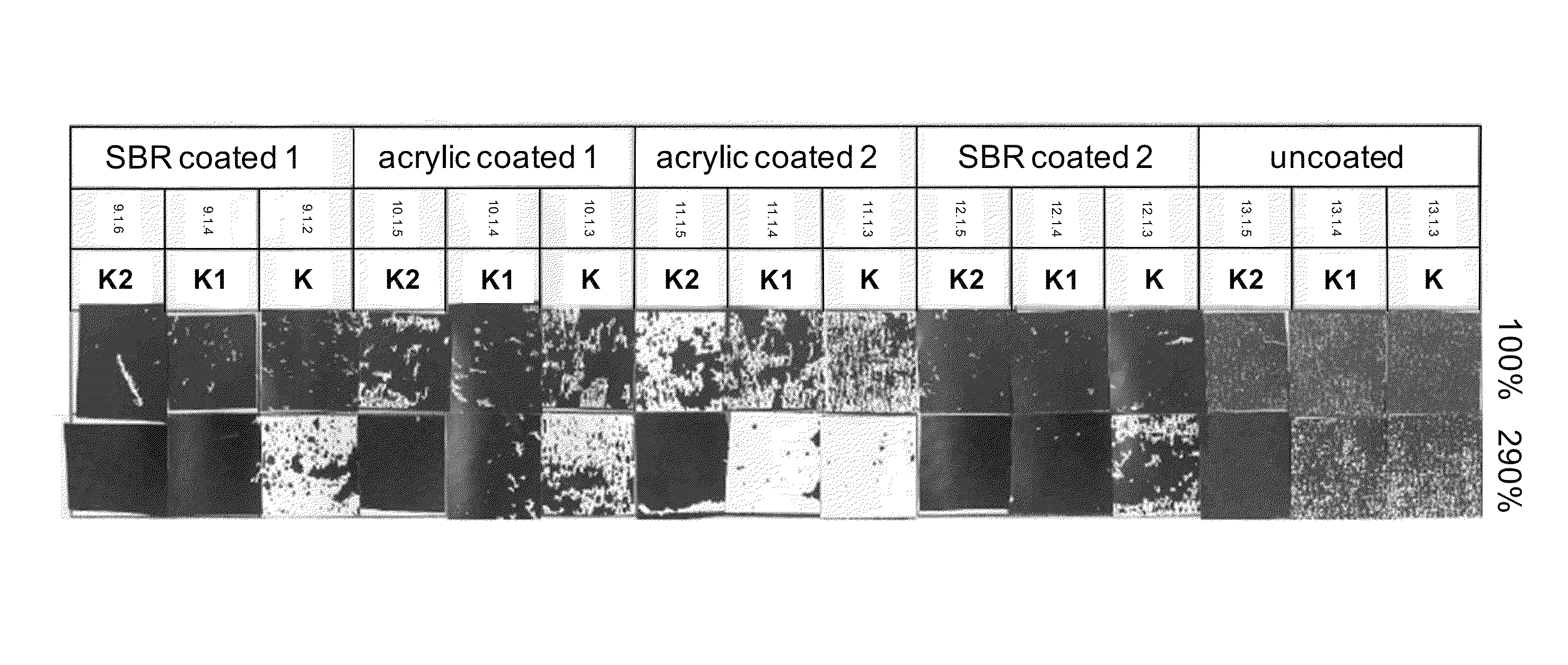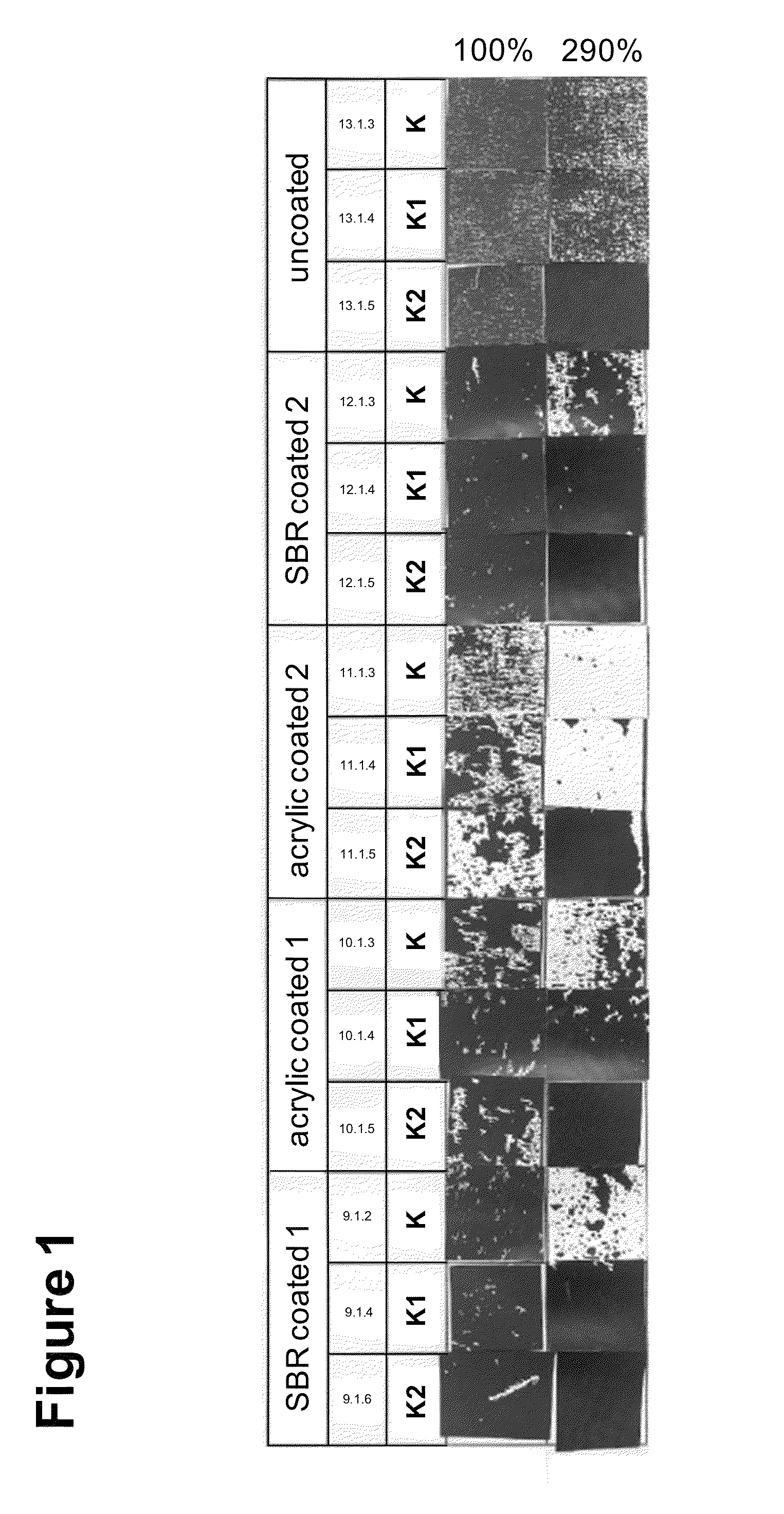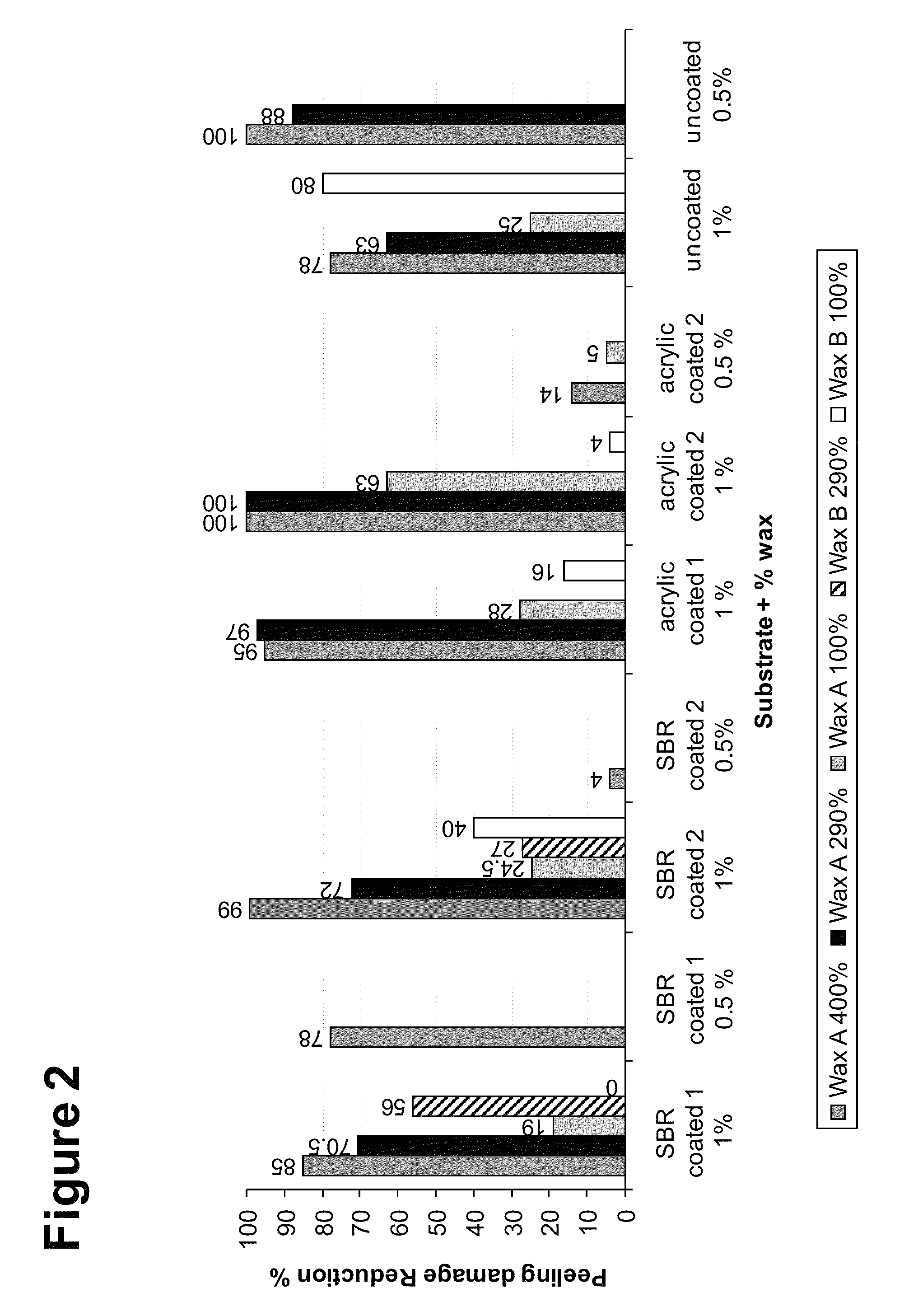Liquid electrophotographic inks
a technology of electrophotography and liquid electrophotography, which is applied in the field of liquid electrophotography inks, can solve the problems of printing being prone to scratching, peeling, and discharging in the areas exposed to light,
- Summary
- Abstract
- Description
- Claims
- Application Information
AI Technical Summary
Benefits of technology
Problems solved by technology
Method used
Image
Examples
examples
[0093]Ink Formulations[0094]K ink (reference ink)
[0095]
Resin composition (out of paste solids, ~80% of total formulation solids)Carrier liquidIsopar ® LResinNucrel ® 925 (DuPont)72%ResinNucrel ® 2806 (DuPont)18%ResinBynel ® 2022 (DuPont)10%Pigments / Additives (added to the resin composition)PigmentCarbon Black18-20% LoadingPE waxAcumist ® B6 (Honeywell)4.5% (w / w)Wax A 0%Wax B 0%Charge adjuvantAluminum stearate1.5% (w / w)[0096]K1 ink
[0097]
Resin composition (out of paste solids, ~80% of total formulation solids)Carrier liquidIsopar ® LResin1Nucrel ® 925 (DuPont)72%ResinNucrel ® 2806 (DuPont)18%ResinBynel ® 2022 (DuPont)10%Pigments / Additives (added to the resin composition)PigmentCarbon Black18-20% LoadingPE waxAcumist ® B6 (Honeywell)4.5% (w / w)Wax ASiberFlow C85 (DKSH) 1% (w / w)Charge adjuvantAluminum stearate1.5% (w / w)[0098]K2 ink
[0099]
Resin composition (out of paste solids, ~80% of total formulation solids)Carrier liquidIsopar ® LResin1Nucrel ® 925 (DuPont)72%ResinNucrel ® 2806 (DuPont...
PUM
| Property | Measurement | Unit |
|---|---|---|
| temperature | aaaaa | aaaaa |
| temperature | aaaaa | aaaaa |
| temperature | aaaaa | aaaaa |
Abstract
Description
Claims
Application Information
 Login to View More
Login to View More - R&D
- Intellectual Property
- Life Sciences
- Materials
- Tech Scout
- Unparalleled Data Quality
- Higher Quality Content
- 60% Fewer Hallucinations
Browse by: Latest US Patents, China's latest patents, Technical Efficacy Thesaurus, Application Domain, Technology Topic, Popular Technical Reports.
© 2025 PatSnap. All rights reserved.Legal|Privacy policy|Modern Slavery Act Transparency Statement|Sitemap|About US| Contact US: help@patsnap.com



